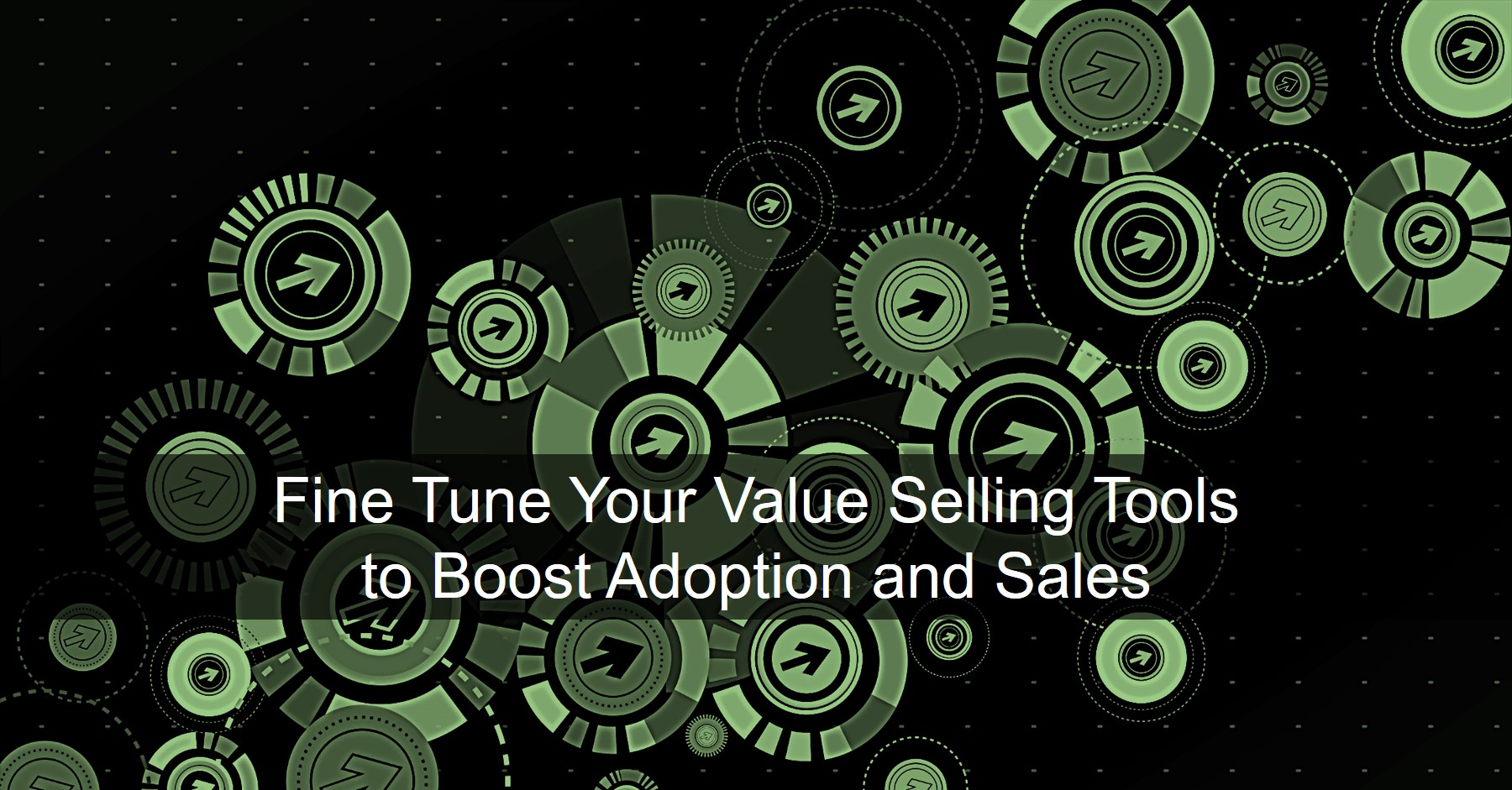
Wonder why your buyers and sales teams aren’t using your value selling tools? Chances are they’re built around a product-centric value proposition and creating unwanted complexity, despite your best intentions. Here are two strategies for fine tuning your value selling tools and increasing adoption.
Each audience has its own tools and value proposition, from the ROI tool used by your sales team to the self-service tools used directly by your buyers. If your tools account for every measure of value delivered by your product and users must plow through inapplicable value drivers, they are likely to get overwhelmed and abandon the tool.
Keep them engaged by matching your tools to their unique needs. Here are examples of how I increased adoption for two new clients.
Match to the Customers' Role
Client #1 serves a financial payment ecosystem with four clearly defined roles. The failed value selling tool they showed me tried to address every value driver for every role. Further complicating this approach was that, almost always, one type of company played a dual role in the ecosystem.
I’ve written before about the guiding principles of a successful value selling tool. Three of these tenets are that the tool is quick and simple to use, and the information requested is both knowable and readily available. The only way to incorporate these principles was to build multiple value selling tools, each focused on one customer role.
In those instances where a single customer played a dual role in the ecosystem, a different value selling tool was required for each role. Why? Because even though the name on the headquarters sign was the same, it is highly unlikely that the customer would ever make a joint purchasing decision for both roles.
It’s okay to group a product having tiers, such as precious metals (gold, silver, bronze) or modifiers (starter, premium, ultra), into one value selling tool. Even related add-on products might make sense. It’s not okay to group disparate products with divergent functionality into one tool.
Match to the Customers' Use Case
Client #2 sells a network technology solution. Although complex, the solution is basically the same from customer to customer. What is widely different though is how customers receive value from the solution.
The original approach used by the client was to include every possible use case in its value selling tool. The better approach we used was to logically group the use cases together and deploy a single value selling tool for each.
For example, the network solution helped reduce scrap rates and improve equipment uptime, so process manufacturing plants, discrete manufacturing factories, and utility plants were grouped together. Similarly, the solution empowered frontline workers, so retail, hospitality, and restaurants were covered by one tool.
A final note on these recommended approaches is to consider the return you receive. Not only does creating multiple value selling tools, each with its own narrower focus, increase the likelihood of closing more deals, the cost to do is essentially the same. Think about it this way. The time to build an all-encompassing value selling tool might be 200 hours but if you break the project down to four tools, each simpler tool should be only 50 hours each.
Conclusion
The more closely you can focus the value drivers in your value selling tools with your buyer’s ability to realize that value, the more successful your value selling program will be.
Resources
Connect with David Svigel on LinkedIn.
Join the Value Selling for B2B Marketing and Sales Leaders LinkedIn Group.
Visit the ROI Selling Resource Center.









